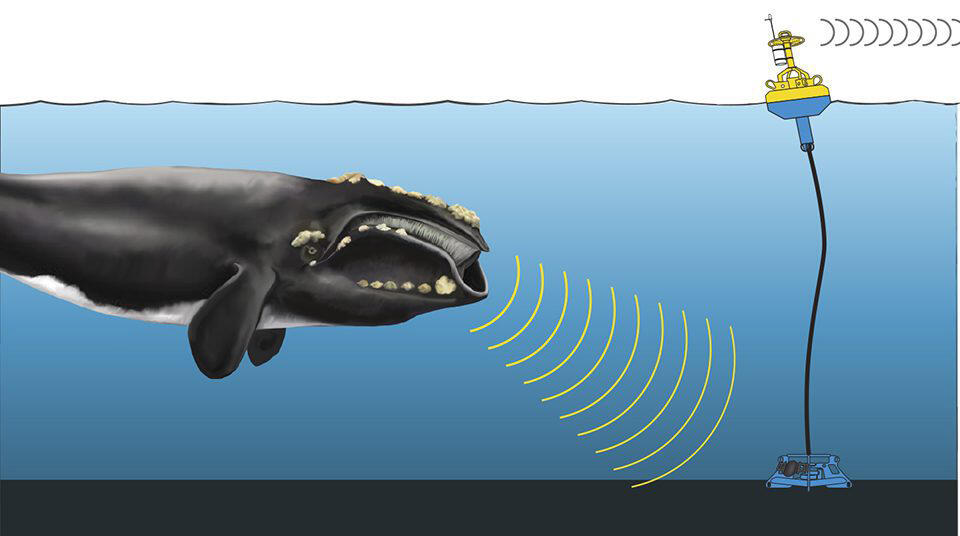- Division of Marine Fisheries

DMF’s Protected Species Program will be adding to our North Atlantic right whale surveillance efforts through the implementation of a passive acoustic monitoring network in state waters and adjacent federal waters. In 2023, Congress allocated funds to states with lobster permit holders to enhance their efforts to monitor the seasonal distribution of right whales, improve compliance with Atlantic Large Whale Take Reduction Plan regulations, and support innovative gear research. A portion of those funds received by Massachusetts are being used to implement a network of passive acoustic monitors which detect right whale vocalizations. This additional monitoring will include both real-time and archival detection methods and will enhance our understanding of the presence of right whales in Massachusetts coastal waters year-round. This acoustic monitoring will complement the aerial surveillance conducted by the Center for Coastal Studies and DMF during winter and spring, providing information about right whale presence outside those survey times and areas.
In early 2025, DMF will deploy 10 bottom-mounted moorings equipped with hydrophones, or underwater recording devices, across Massachusetts state waters and adjacent areas. The hydrophones will be archival, collecting data over a four-month period before being called to the surface using an acoustic release. The data will then be accessed, and the hydrophones and moorings redeployed to continue recording right whale vocalizations. This array of recorders will be part of a regional acoustic monitoring network for right whales in the Northeast in collaboration with NOAA’s Northeast Fisheries Science Center and other New England states. In addition, DMF is partnering with the Woods Hole Oceanographic Institution to operate two real-time passive acoustic monitoring buoys (one in Cape Cod Bay and one off Gloucester) which will relay right whale call detections via satellite to a publicly accessible website.
The data collected through this acoustic monitoring network will enhance our understanding of the spatial and temporal presence of North Atlantic right whales, aid in the development of occupancy estimates, and increase the efficiency of dynamic management of fixed gear closures meant to protect right whales from entanglement. Real-time detections will improve our confidence in the decision to extend or open the closure of the Massachusetts Restricted Area due to right whale presence or absence, as well as assist in guiding aerial survey efforts. Archival data will be analyzed for seasonal and temporal patterns in detections, aiding in the estimates of right whale density and occupancy in New England waters, which can then be incorporated into the Duke University North Atlantic Right Whale Density Model and regional efforts to revamp right whale entanglement risk modeling.
By Erin Burke and Emma Fowler, Protected Species Program
Status of North Atlantic Right Whales
In October 2024, the National Marine Fisheries Service released the updated population abundance estimate for the North Atlantic right whale. There were approximately 372 individuals in the population during 2023, which is a slight increase from the estimate of 356 individuals in 2022. The sharp decline in the population which began in 2010 appears to have slowed, due to reduced mortalities and increased births. While there are positive signs of population growth, the species still faces serious threats from entanglement and ship strike. There were 20 births in 2024, however, five of the calves have died or are missing and presumed dead. In addition, there were other serious injuries and mortalities in 2024 due to entanglement and ship strike. The species remains under an Unusual Mortality Event designation based on these continued impacts.
